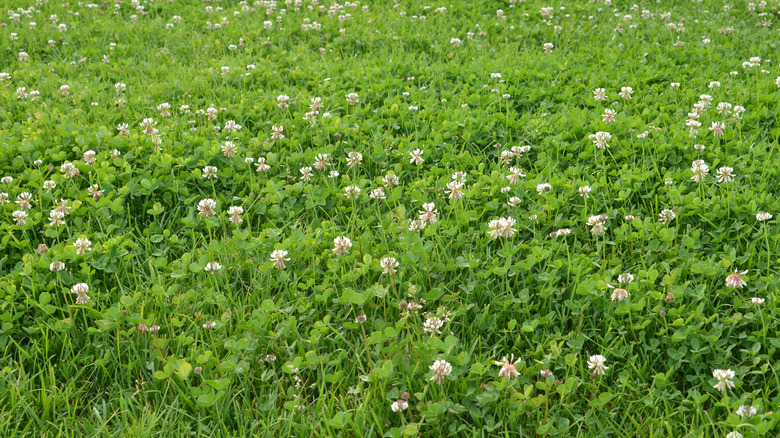Alternatives to traditional turf grass lawns are gaining popularity. More natural, eco-friendly ground covers, like clover, require less work and resources — including fertilizer — to stay green and lush from spring through fall. In fact, clover is a nitrogen-fixer, which means it takes nitrogen from the air and turns it into nodules on its roots. These nitrogen nodules are then deposited into the soil. Clover literally makes its own fertilizer, and that is much better for the environment than synthetic options.
These benefits of having a clover lawn all sound wonderful — and they are! — but keep in mind that clover lawns are a monoculture, meaning only one plant in a single area. With only one type of ground cover, your entire yard will respond in one single way. And, depending on where you live, it could die entirely back to the ground during winter, leaving you with a soggy mud pit until it reemerges in the spring.
White clover (Trifolium repens) is the most popular choice for lawns. Although this ground cover is a perennial in USDA Hardiness Zones 3 through 10, it will die back to the ground in areas that experience winter weather that drops below 32 degrees Fahrenheit. In northern regions, clover will die back after the first freeze. If you live farther south where temperatures stay mild throughout the year, you generally won’t have to worry about this. Clover tolerates heat and sun, but not freezing temperatures.
Winter dormancy

To gain the benefits of a clover lawn in cooler climates, without dealing with bare soil in the winter, consider mixing certain types of turf grass with clover. These grasses will provide soil coverage in the winter when the clover has completely died back. Low-growing, non-invasive grasses, like fescues, are good options to keep your clover, while avoiding a barren, muddy winter lawn. There are even some dwarf varieties that will allow you to achieve your goal of a no-mow, clover-based lawn. Perennial ryegrass and Kentucky bluegrass are also good options to mix with your clover, depending on your region.
Since clover lawns can grow up to about a foot tall, you may want to prepare your lawn for winter by mowing it a few weeks before the first frost. While the clover will still die back to the ground, a late-season trim may make your yard a little less messy to deal with.